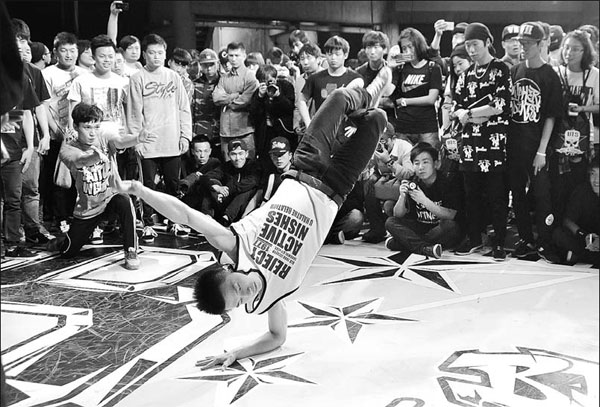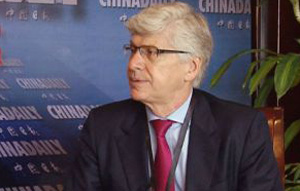Former industrial sites given imaginative new lease of life
Updated: 2013-06-14 07:40
By Shi Jing and Yu Ran in Shanghai (China Daily)
|
||||||||
|
A dancer performs at the 1933 Creative Park in Shanghai. The local government plans to build the cosmopolitan city into a creative hub servicing the industrial heartland of the Yangtze River Delta region. Provided to China Daily |
Despite efforts to liven up its gray concrete structure with colorful lights and attractive signs, the old abattoir in downtown Shanghai, renamed 1933 in memory of a bygone age, remains an eerie place, with a chill draft blowing through the premises.
Improbable as it may seem, this carefully preserved building is the centerpiece of a design park that forms part of the Shanghai government's ambitious plan to establish the cosmopolitan city as a creative hub servicing the industrial heartland of the Yangtze River Delta region.
This plan, in turn, is part of an even more ambitious undertaking to enhance Shanghai's role in national economic restructuring to achieve sustainable growth in years to come.
At the 1933 Creative Park, several new buildings grouped around the old abattoir are home to some of the biggest names in industrial design and art studios, servicing clients in various industrial hotspots in the region, including Nanjing, Suzhou and Wenzhou.
Mondu Visual Communication Creative Direction & Consultancy Studio settled in 1933 at the end of 2008. Xin Han, one of the three founders, which specializes in industrial, space, and interior design along with visual media, said the company chose the venue to base its studio, as the construction style of the creative park matched company expectations.
"First of all, the three of us, who are also designers, feel very good working here. We will be inspired to come up with more ideas here. Secondly, customers will get to know the orientation of our studio if they come here. They will know our taste," Xin said.
The higher the floor at 1933 Shanghai, the higher the rent. Xin's firm is on the sixth floor, at the top of the building, and the rent is about 6 yuan ($1) per square meter, which he says is affordable.
"From only two designers at the very beginning, we now have 15. We are working with the Oriental Pearl TV Tower, which hasn't changed its interior design contractor for more than a decade. We will design a new mascot for it and give it a brand new look," he said.
Furniture brand KUSHI from the Netherlands arrived at 1933 Shanghai about four years ago. It also chose the creative park for its style.
Paying a monthly rent of about 100,000 yuan, the company has done relatively well over the past four years, according to Vivi Zhang, the sales manager.
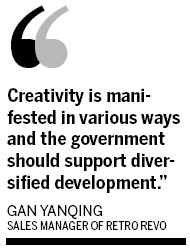
"Honestly speaking, 1933 Shanghai has not made much profit since it opened. And the park itself has not helped much in terms of the operation of our brand. Domestic furniture brands usually prefer to go to shopping malls, which will save a lot in terms of advertising, marketing and sales. But all these brands will grow in the same fashion at the end of the day, without any personality, as they have to follow the sales policies of the shopping malls," Zhang said.
"But, usually, overseas designers will not adopt this type of sales. Their ideas are quite different and they always prefer to take the road less traveled."
Arriving at 1933 Shanghai at the end of May, British furniture brand Retro Revo has quickly become accustomed to its new surroundings. The style of the park matches the style of its furniture, said Gan Yanqing, sales manager.
"We received orders in the first few days after opening. Tourism will help to bring in some customers but will not really help with turnover.
"But the thing is, most people just take 1933 Shanghai as a tourist attraction but few will know it is also home to many design firms. By taking a look at the less vibrant business atmosphere here, we can see that the park operator has not been very successful in attracting investment.
"We hope that government will give more help to design firms like us. Creativity is manifested in various ways and the government should support diversified development," Gan said.
For Xia Guangyao, owner of Wenzhou Jialunte Textile Finery, creativity means money. When overseas orders began to dwindle following the economic downturn in Western economies, Xia turned to an Italian design firm in Shanghai for help.
Instead of reducing costs by cutting back like many of his associates in Wenzhou did, Xia increased spending to revamp his product lines based on new designs from the Italian firm. He said he hasn't hit the jackpot, but is close, with his factory raking in profits while others in the business are failing.
Xia said he plans to build up the design capability in-house. "I am scouting for design talent up and down the country for my new creative team," he said.
"It is hard to come by, but I am willing to spend money for the right person."
In Shanghai, the pool of design talent is expanding at 1933 and other creative parks. Less than 8 km from 1933 is Bridge 8, a renovated automotive components factory on a tree-lined street in the former French Concession.
Naco Architecture arrived at Bridge 8 in 2007. The interior design firm's designers, who come from all over the world, have found the venue ideal to work in, as the firm's marketing manager, who only gave his surname, Zhao, explained.
"Bridge 8 is a real cradle of creativity. Designers with different specialties gather here and give one another a great deal of inspiration, which provides incentive for more inspiration," he said.
A sales manager, surnamed Qu, at New Zealand-registered garment company Cue, said: "Visitors to Bridge 8 are usually more fashion-conscious. The rent is about 10,000 yuan a month, which is quite reasonable. After two years here, we can see that business is quite good.
"Designers for our brand love to work here, as Bridge 8 provides a superb creative atmosphere. But we have little idea of the local government's policy to boost creative industry. Therefore, we don't really benefit in this regard," Qu added.
Zhang Xiaoxian contributed to this story.
Contact the writers at shijing@chinadaily.com.cn and yuran@chinadaily.com.cn.
(China Daily 06/14/2013 page17)

 Philippine, US start Naval exercise in S China Sea
Philippine, US start Naval exercise in S China Sea
 Supreme Court gay rights ruling celebrated across US
Supreme Court gay rights ruling celebrated across US
 Rudd returns as Australian PM after Gillard
Rudd returns as Australian PM after Gillard
 Brazil protests intensify before Confed Cup semifinal
Brazil protests intensify before Confed Cup semifinal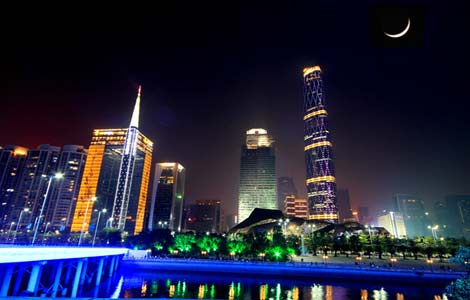
 Long lost weekend
Long lost weekend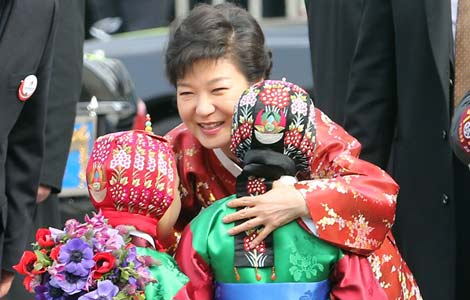
 Park ready to charm China
Park ready to charm China
 Prices climb as police crack down
Prices climb as police crack down
 China 'most promising' in FDI
China 'most promising' in FDI
Most Viewed
Editor's Picks
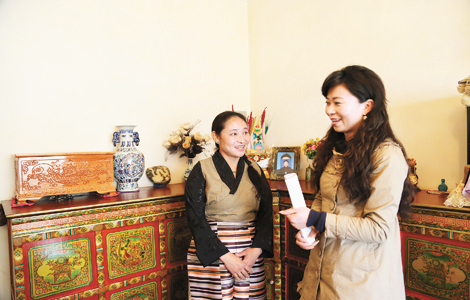
|

|

|
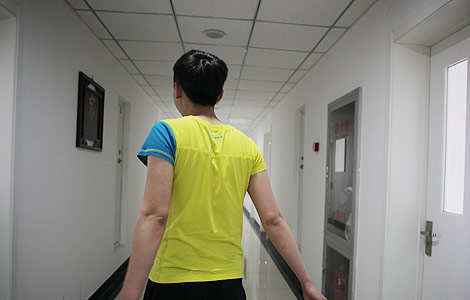
|

|

|
Today's Top News
Proposed law puts curbs on family visas
Markets will stay volatile, continue to struggle: Expert
Promising outlook on US, China investment
US adoptees visit Chinese roots
Ecuador refutes Washington Post accusation
IBM to make Chinese job cuts
PBOC ends credit crunch, to go further
Snowden still at Moscow's airport, asylum pending
US Weekly

|

|
